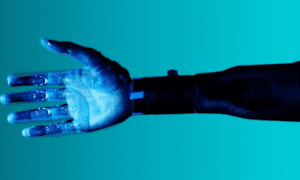Automated processes, abbreviated costs and a ready-made solution to survive industrial production in COVID restriction is exactly why IIoT has grown tremendously in the last 9 months. From small-scale manufacturers to large-scale production units, IIoT is steadily gaining a strong foundation across the spectrum. No matter whether the world is waking up to normalization, enterprises want to stay prepared for another pandemic-like situation and IIoT is an important initiative.
Here we walk you through 3 key trends that’ll help Industrial IoT expand its influence.
Trend #1: Spend on Employee Safety will increase
71% of surveyed decision-makers will prioritize employee safety over financial stability (44%) in 2021. Since most businesses are eager to get the employees back to work in the company, ensuring safety is the top pre-requisite.
Pre-COVID
More than just automating the machine operations, IIoT will be of greater importance in ensuring workforce safety. The lessons from COVID have compelled companies to deploy processes that keep a check on employees following all safety norms. Through cameras and sensors, a simplistic IIoT application can monitor if all employees have been sanitized before stepping onto the floor and if they are wearing the masks properly. Despite hints of vaccination, factories will still prefer social distancing in the post COVID era.
Thus, IIoT has a greater potential in ensuring employee safety.
Post-COVID
Predictive monitoring can raise alerts about machines that are prone to accidents. This is important because on-floor work injuries cost USD 170 billion to global organizations. By identifying areas of high accident vulnerability in the assembly line or processes where more injuries occur, large-scale destruction can be avoided. It is important to know that this was the case before the pandemic. Now, lessening the dependency on manual expertise will require connected devices in an industrial setup.
If faults are resolved in time, this cost could be utilized towards other initiatives of employee welfare.
Trend #2: Focus on Operational Resilience through automation
Manufacturing had a hard hit. Industries in the 10 most-affected states in the USA faced a decline of USD 400 billion in revenue. Any further shutdown could directly impact the routine supplies. In order to trek the fine line, industries have started embracing IIoT applications. This ensures operational efficiency through minimum human presence around the machines. Subsequently, lessened human presence on the floor ensures social distancing and minimum risk of infection spread.
However, even if there was no COVID scare, IIoT was poised to expand in 2021. The global IIoT market was already expected to grow at a CAGR of 22.4% while valued at USD 885.1 billion by 2027.
This is because remote assistance deployments save up to 30-40% in equipment servicing costs for the OEMs. In 2021, the IIoT applications will go beyond remote assistance to predictive maintenance, fault analysis, machine metric analysis and others. A recent study on IoT Product Development post covid details the impact of IIoT in 2021 across sectors and foresees a swathe of processing through connected devices. Ioterra, a digital IoT marketplace devoted to technology predicts an immediate rise in the demand for experts in industrial deployments. The platform that hosts a large number of OEMs and project owners foresees IoT projects maturing from simplistic domestic solutions to critical deployments in an industrial unit.
Trend #3: Increased Spending on Cyber Security
Like all good things on the web are vulnerable to attacks, IoT is no different. IoT is a tempting ecosystem that provides multiple entry points to a network. In 2019, 90% of consumers lack confidence in IoT networks. In the same year, over 100 million attacks were made on IoT endpoints (Kaspersky findings).
Cybersecurity in IIoT is highly critical because the impact is more than just financial and reputational dent. Here, millions of connected devices whether on the floor or outside the facility are at stake. IIoT networks have direct access to ERP systems that are an ocean of confidential data including trade secrets. Any massive cyber-attack could cause disruptions beyond predictions. An article on developing IoT product details further on the different types of botnets specifically developed for IIoT networks.
Therefore, manufacturing units have a greater responsibility of ensuring continuous vulnerability management, secured configuration and third-party analysis of security logs. If you lack in-house expertise then don’t hesitate to partner with technology experts. In fact, IoTerra confirmed a 2X increase in the hiring of IoT cyber experts and other professionals on its platform after COVID. Given the stakeholder pressures to launch early in 2021, this demand will further increase.
The Internet of All Things
Going forward, enterprises need to embrace automation through connected devices across all endpoints. There’s a pool of humongous data and IoT is the channel for streamlining it in a safe yet transparent manner.



















































